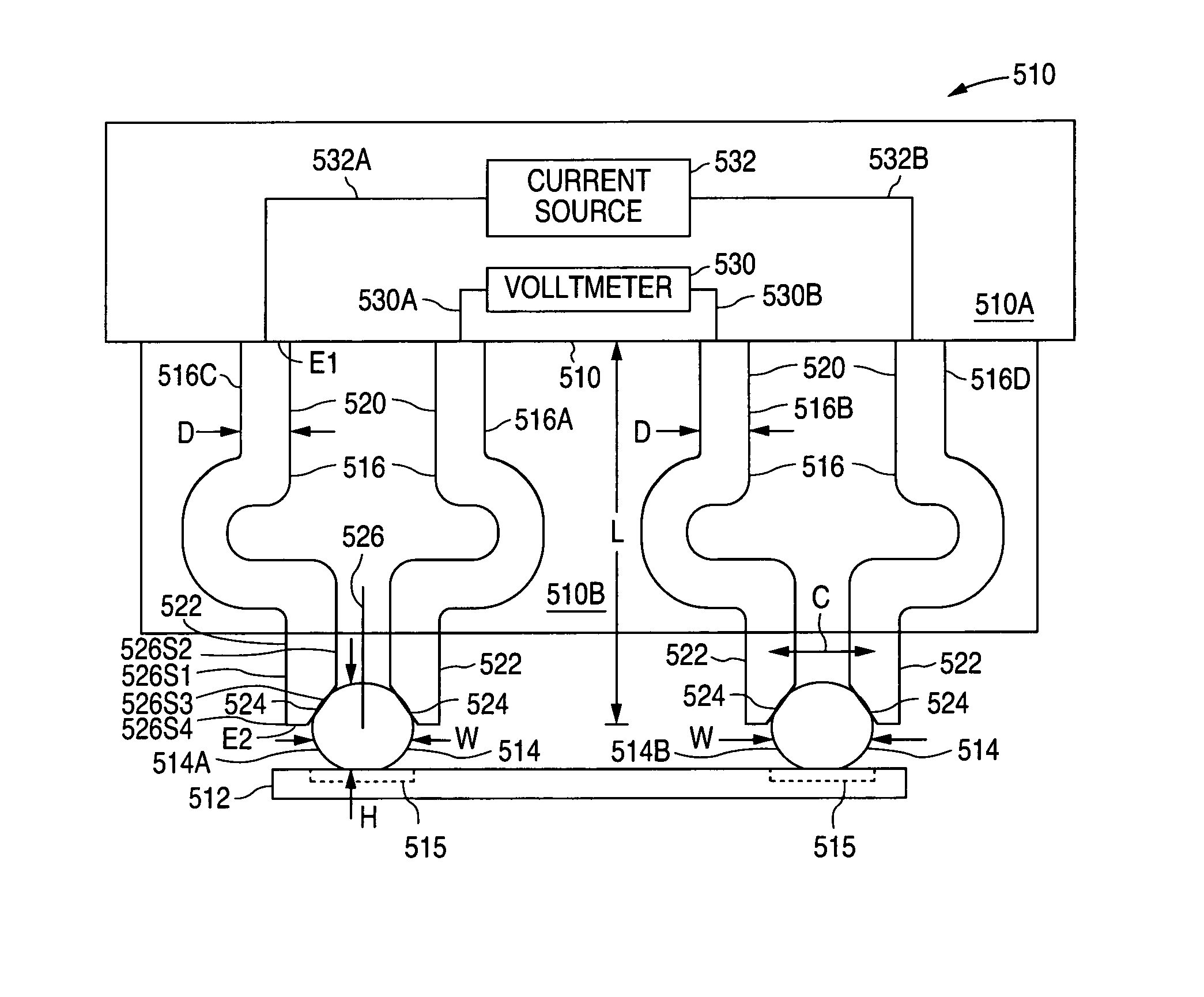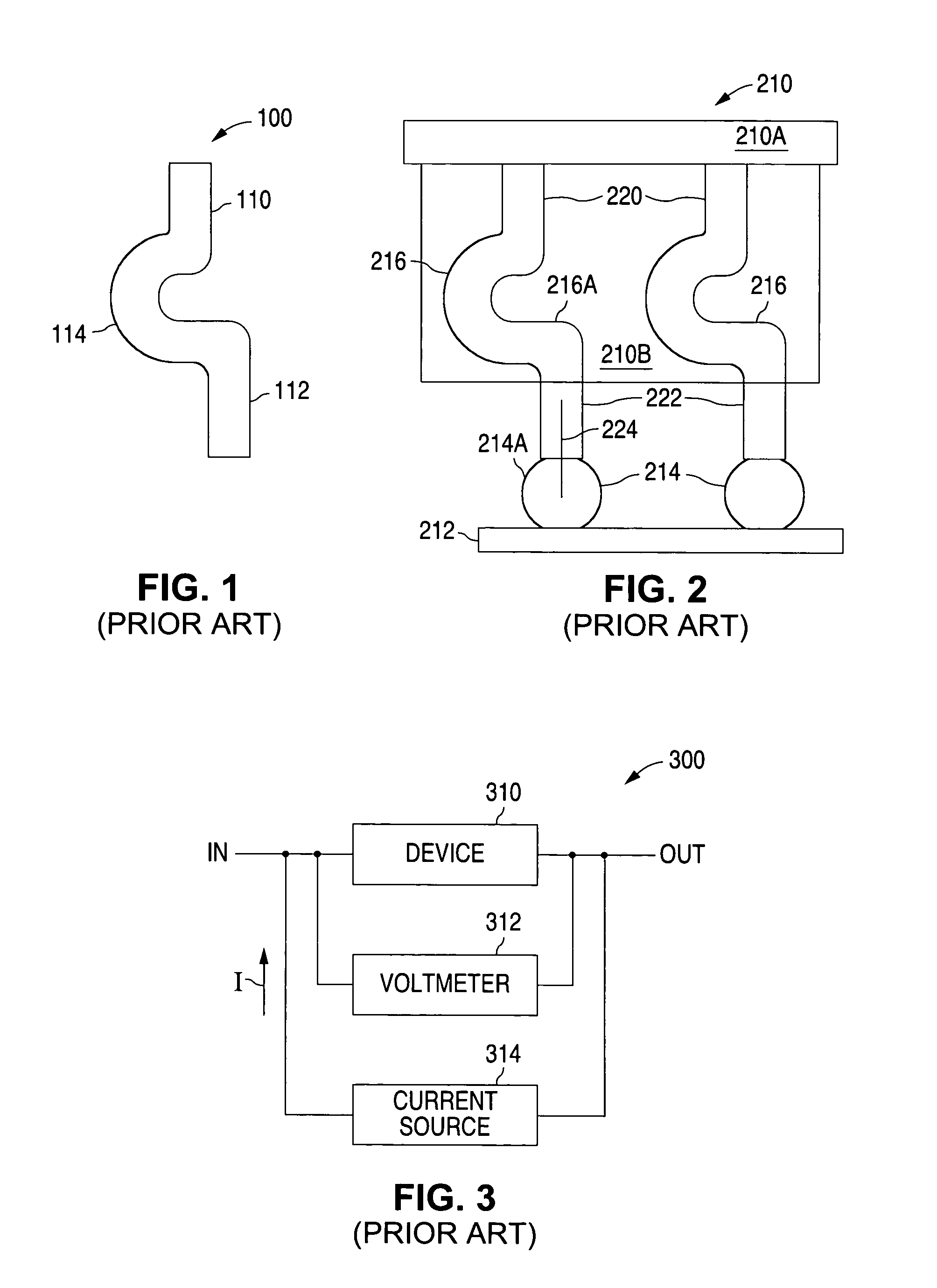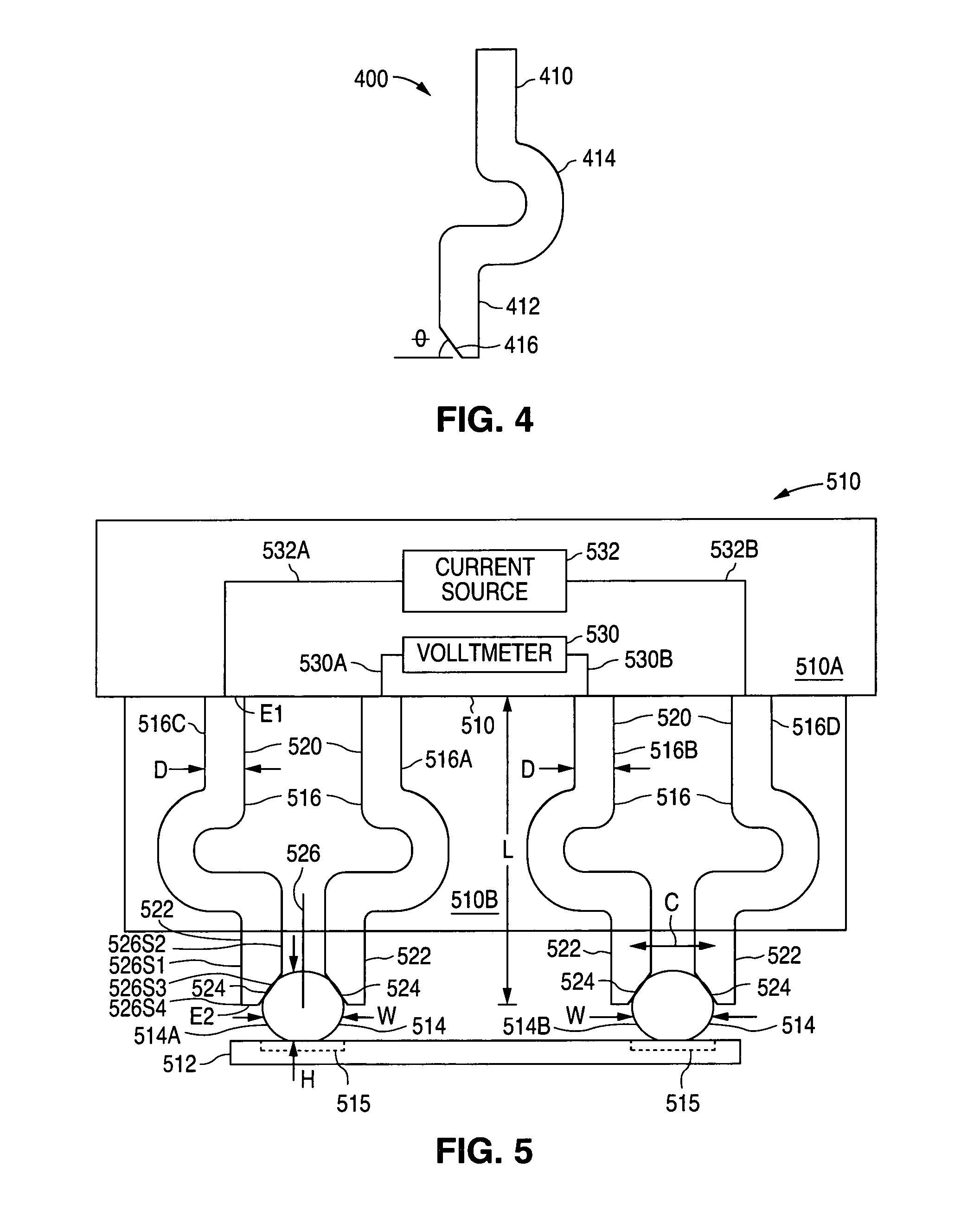Spring-based probe pin that allows kelvin testing
a probe pin and spring technology, applied in the field of probe pins, can solve the problems of two conventional spring-based probe pins not being able to cantilever pins can significantly damage the solder bumps, and cantilever pins cannot be used in kelvin testing
- Summary
- Abstract
- Description
- Claims
- Application Information
AI Technical Summary
Problems solved by technology
Method used
Image
Examples
Embodiment Construction
[0025]FIG. 4 shows a cross-sectional diagram that illustrates an example of a spring-based probe pin 400 in accordance with the present invention. As described in greater detail below, by offsetting and tapering the lower end section of a spring-based probe pin, multiple pins can be connected to a single solder bump, thereby allowing a kelvin test to be performed.
[0026]As shown in the FIG. 4 example, probe pin 400 is implemented as a single metal element that has a top end section 410, a bottom end section 412, and a C-shaped section 414 that connects sections 410 and 412 together. In addition, in accordance with the present invention, bottom end section 412 has a tapered surface 416. Tapered surface 416 is flat, and has an angle θ, such as 45°, which is selected to minimize contact damage. Other angles, as well as a curved surface that generally matches the surface of a solder bump, can also be used to form tapered surface 416.
[0027]FIG. 5 shows a cross-sectional diagram that illus...
PUM
 Login to View More
Login to View More Abstract
Description
Claims
Application Information
 Login to View More
Login to View More - R&D
- Intellectual Property
- Life Sciences
- Materials
- Tech Scout
- Unparalleled Data Quality
- Higher Quality Content
- 60% Fewer Hallucinations
Browse by: Latest US Patents, China's latest patents, Technical Efficacy Thesaurus, Application Domain, Technology Topic, Popular Technical Reports.
© 2025 PatSnap. All rights reserved.Legal|Privacy policy|Modern Slavery Act Transparency Statement|Sitemap|About US| Contact US: help@patsnap.com



